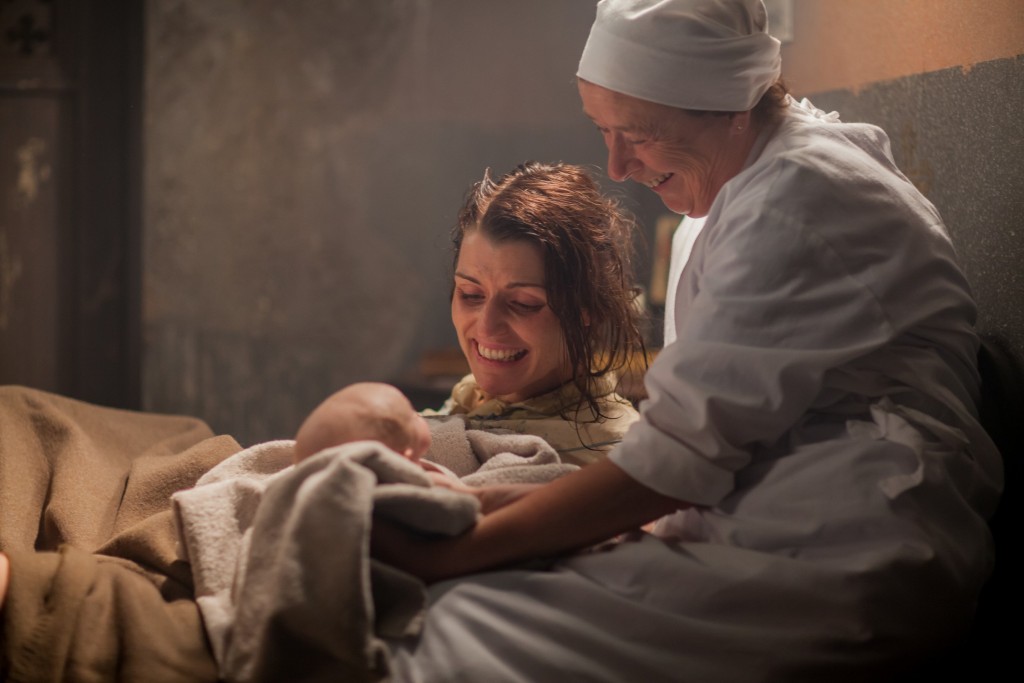For the fourth season in a row, we are honored to have the faculty of the Vanderbilt School of Nursing back to guest blog for us each Monday morning about the previous night’s episode of Call the Midwife, airing Sundays on NPT and PBS Stations nationwide at 7 p.m. CDT through May 17. Check in every Monday morning for historical and contemporary context on the show along with some fun discussion. SPOILER ALERT: Be aware that some posts may contain spoilers.

By Michelle Collins, Ph.D., CNM
As I watch these episodes of Call the Midwife, I like to look for themes, and those two words come to mind from this episode. First, disease. It’s always amazing to me when information arises from these episodes that is as relevant today as it was in the time period depicted in the show. As we watched Shelagh Turner (played by Laura Main) describe the saving graces of hand-washing and the use of soap to the women in the prenatal clinic, I was reminded of Ignaz Semmelweis (1818-1865). Not a familiar name you say? Semmelweis was a Hungarian physician who was the first to propose the one thing that could decrease the incidence of puerperal fever (also known as childbed fever).
Childbed fever, or the infection of a women’s reproductive tract which is conferred during the process of giving birth, was a scary reality for women in the 1800s. The mortality rates for women giving birth in hospitals at that time was as high as 40 percent. What is astonishing is that the major cause of childbed fever was the contamination of women’s reproductive organs from bacteria on the hands of the very physicians who attended their births. You see, physicians would go from birth to birth in the hospitals, even from performing an autopsy to a birth, and rarely (if EVER) wash their hands. Hard to believe, but it was not understood that one’s hands were such fertile ground for bacterial growth. A leading obstetrician of the day was quoted as saying “Doctors are gentlemen, and gentlemen’s hands are clean.”
Enter Ignaz Semmelweis, who noticed that women who stayed in their homes to give birth had a markedly lower rate of childbed fever than those giving birth in the hospital. He proposed – and proved – that the simple act of washing one’s hands with an antiseptic solution (prior to attending a birth) reduced the mortality rate from childbed fever by an astounding 90 percent. Shockingly, as still happens today, those in the “establishment” who refused to accept his findings persecuted him to the point that he was eventually committed to a mental institution, where he subsequently died. A long overdue thank-you, Dr. Semmelweis.
The other theme of this episode for me was authenticity. It was heartbreaking to watch the tortured young man attempting to fit into the societal mold that was the antithesis of who he really was. The court proceedings he underwent were cringe-worthy, and the sentence of “treatments” that would “cure” him equally so. This brings us back to my earlier point that I am amazed when stories or circumstances arise from these episodes which are as current now as they were during the show’s time period. Haven’t we very recently seen news stories about clinical programs purporting that they can “cure” homosexuality? We would like to think that we have come a long way since the time when it was actually a crime to be oneself; but perhaps not. As the good Dr. Seuss once said “Be who you are and say what you feel, because those who mind don’t matter and those who matter don’t mind.”
Michelle Collins Ph.D., CNM, is an Associate Professor of Nursing, Director Nurse-Midwifery Program, at Vanderbilt University School of Nursing.
